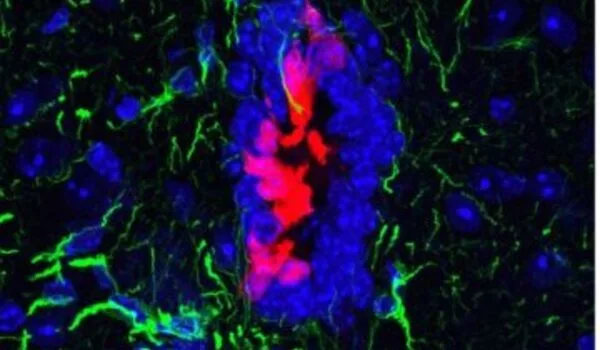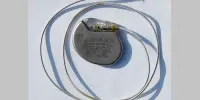Researchers created a device that can change the color of laser beams using an atomically thin material. Their microscopic device, which is a fraction of the size of conventional color converters, could result in new types of ultra-small optical circuit chips and advance quantum optics.
Lasers can be found everywhere. Lasers are used in devices that transmit data and enable the existence of long-distance communications and the internet; they assist doctors performing surgeries and engineers manufacturing advanced tools and technologies; and we encounter lasers on a daily basis as we scan our groceries and watch DVDs. “Lasers have absolutely transformed our lives in the 60-plus years since they were invented,” said Giulio Cerullo, a nonlinear optics researcher at Politecnico di Milano in Italy.
Today, with the help of new research from Cerullo and collaborators at Columbia University published in Nature Photonics, devices that use lasers are poised to become a whole lot smaller.
Working in engineer James Schuck’s lab at Columbia, PhD student Xinyi Xu and postdoc Chiara Trovatello studied a 2D material called molybdenum disulfide (MoS2). They characterized how efficiently devices built from stacks of MoS2 less than one micron thick – that’s 100 times thinner than a human hair – convert light frequencies at telecom wavelengths to produce different colors.
In science, it is rare to begin a project that ends up working better than expected; usually, the opposite is true. This was a unique and magical case. Normally, special sensors are required to register the light produced by a sample, and this takes time. We could see the extremely large enhancement almost immediately with 3R-MoS2.
Xinyi Xu
According to Trovatello, who recently completed her PhD with Cerullo in Milan, this new research is a first step toward replacing the standard materials used in today’s tunable lasers, which are measured in millimeters and centimeters. “Nonlinear optics is currently a macroscopic world,” she explained, “but we want to make it microscopic.”
Lasers emit a type of coherent light, which means that all of the photons in the beam have the same frequency and thus color. Lasers only operate at specific frequencies, but devices frequently require the ability to deploy different colors of laser light. A green laser pointer, for example, is created by an infrared laser that is converted to a visible color by a macroscopic material. Researchers use nonlinear optical techniques to change the color of laser light, but conventionally used materials need to be relatively thick for color conversion to occur efficiently.
MoS2 is one of the most studied examples of an emerging class of materials called transition metal dichalcogenides, which can be peeled into atomically thin layers. Single layers of MoS2 can convert light frequencies efficiently, but are actually too thin to be used to build devices. Larger crystals of MoS2, meanwhile, tend to be more stable in a non-color converting form. To fabricate the necessary crystals, known as 3R-MoS2, the team worked with the commercial 2D-material supplier HQ Graphene.

Using 3R-MoS2, Xu began peeling off samples of varying thickness to see how efficiently they converted light frequency. The results were immediately spectacular. “In science, it is rare to begin a project that ends up working better than expected; usually, the opposite is true. This was a unique and magical case” Schuck remarked. Normally, special sensors are required to register the light produced by a sample, and this takes time, according to Xu. “We could see the extremely large enhancement almost immediately with 3R-MoS2,” he said. Notably, the team captured these conversions at telecom wavelengths, which is an important feature for potential optical communications applications such as providing internet and television services.
In a fortunate accident during one scan, Xu focused on a random edge of a crystal and saw fringes that suggested waveguide modes were present inside the material. Waveguide modes keep different color photons, which otherwise move at different speeds across the crystal, in sync, and can possibly be used to generate so-called entangled photons, a key component of quantum optics applications. The team handed their devices off to the lab of physicist Dmitri Basov, where his postdoc Fabian Mooshammer confirmed their hunch.
Currently, the most popular crystal for waveguided conversion and generating entangled photons is lithium niobate, a hard and stiff material that needs to be fairly thick for achieving useful conversion efficiencies. 3R-MoS2 is equally efficient but 100 times smaller and flexible enough that it can be combined with silicon photonic platforms to create optical circuits on chips, following the trajectory of ever-smaller electronics.
With this proof-of-concept result, the bottleneck toward real-life applications is large-scale 3R-MoS2 production and high-throughput device structuring. According to the team, industry will have to take over there. They hope that this work has demonstrated the promise of 2D materials.
“I’ve been studying nonlinear optics for over thirty years. Most research is incremental, gradually building on previous findings. It’s uncommon to try something completely new with high potential” Cerullo stated. “I believe this new material has the potential to change the game.”
















